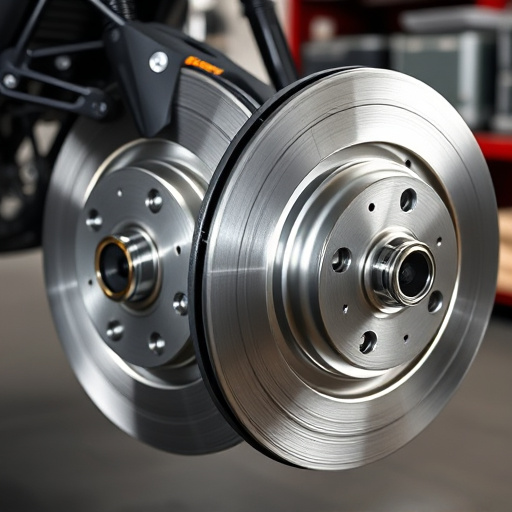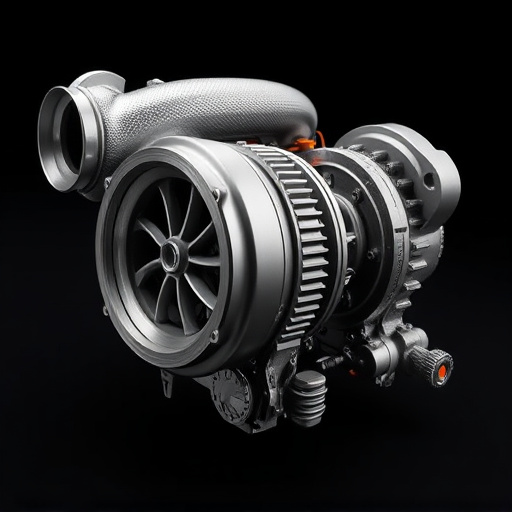Elevate Vehicle Performance: High-Grade Steel Control Arm Upgrades
A control arm upgrade significantly enhances vehicle performance and suspension longevity, using hig…….
Welcome to an in-depth exploration of a groundbreaking automotive innovation: the control arm upgrade. In recent years, this seemingly mundane component has emerged as a game-changer in vehicle dynamics and safety. This article aims to unravel the intricacies of control arm upgrades, shedding light on their purpose, impact, and potential. By the end, readers will grasp why this technology is not just a mere enhancement but a critical evolution in the automotive industry.
Definition: A control arm, also known as an upper control arm or strut tower bar, is a crucial structural element in modern vehicles. It connects the suspension system to the vehicle’s chassis, facilitating the control and stability of the wheels during various driving conditions. An upgrade involves enhancing this component to improve its performance, durability, and safety features.
Core Components:
Historical Context: The concept of control arms has been around since the early 20th century when vehicles had simpler suspension systems. However, with advancements in vehicle dynamics and safety standards, modern control arms have evolved to incorporate advanced materials and design elements. The recent push for lighter, yet stronger components has led to innovative upgrades, making them a key focus in automotive research and development.
The control arm upgrade phenomenon is not confined to a single region; it has captivated the global automotive industry. Key trends and influences are shaping its global impact:
| Region | Impact and Trends |
|---|---|
| North America | The US and Canada have seen a rise in demand for high-performance vehicles, leading to advancements in control arm technology. Companies like Ford and General Motors have invested in lightweight materials, resulting in improved fuel efficiency and handling. |
| Europe | European automakers are focusing on reducing emissions and enhancing safety. Control arm upgrades play a role in achieving these goals by optimizing vehicle dynamics and improving crashworthiness. |
| Asia-Pacific | This region’s massive automotive market is witnessing rapid electrification. Control arms designed for electric vehicles (EVs) are evolving, incorporating advanced materials to handle the unique demands of EV suspensions. |
| Emerging Markets | Countries like India and Brazil are experiencing growth in their automotive sectors. Local manufacturers are adopting global best practices, including control arm upgrades, to enhance vehicle performance and safety standards. |
Market Size and Growth: The global market for control arm upgrades is substantial and growing. According to a 2022 report by Market Research Future (MRFR), the market value was estimated at USD 7.5 billion in 2021 and projected to reach USD 9.8 billion by 2028, growing at a CAGR of 4.3% during the forecast period.
Investment Patterns: Major automakers are investing heavily in research and development (R&D) to create advanced control arm systems. For instance, Tesla’s focus on all-electric vehicles has driven innovation in lightweight control arm designs. Additionally, tier-one automotive suppliers are crucial players, developing and supplying specialized control arms to original equipment manufacturers (OEMs).
Economic Impact: The control arm upgrade market contributes to economic growth through:
The control arm upgrade landscape is characterized by constant technological innovations:
Lightweight Materials: One of the most significant advancements is the adoption of lightweight materials like aluminum and carbon fiber composites. These materials reduce vehicle weight, improving fuel efficiency and handling dynamics. For instance, BMW’s use of high-strength steel in their control arms has contributed to better crash performance while keeping costs manageable.
Advanced Manufacturing: 3D printing and additive manufacturing techniques are revolutionizing control arm production. This technology allows for intricate designs, improved strength-to-weight ratios, and reduced manufacturing times.
Sensor Integration: Modern control arms are integrating sensors to provide real-time data on wheel movement, suspension geometry, and road conditions. These sensors enable advanced driver assistance systems (ADAS) and active vehicle dynamics, enhancing safety and performance.
Digital Design and Simulation: CAD (Computer-Aided Design) software and simulation tools enable engineers to optimize control arm designs virtually before physical production. This process reduces development time and costs while ensuring superior performance.
The automotive industry is heavily regulated, and control arm upgrades are no exception. Key policies and regulations shape their development and deployment:
Safety Standards: Organizations like NHTSA (National Highway Traffic Safety Administration) in the US and EU’s ECE (Economic Commission for Europe) set safety standards for vehicles, including suspension systems. Control arms must meet these criteria to ensure vehicle stability and crash protection.
Emission Regulations: Governments worldwide are implementing stricter emission norms, pushing automakers to develop lighter vehicles. Control arm upgrades that contribute to weight reduction while maintaining structural integrity align with these regulations.
Environmental Standards: The push for sustainability has led to regulations encouraging the use of recycled materials and eco-friendly manufacturing processes in control arms.
Product Liability: Automakers and suppliers must ensure product safety and liability, leading to rigorous testing and quality control measures during control arm development.
Despite its numerous benefits, the control arm upgrade concept faces challenges and criticisms:
Cost Concerns: Upgrading control arms can be expensive, especially when incorporating advanced materials and technology. This cost may be a barrier for some automakers, particularly in price-sensitive markets.
Supply Chain Issues: Global supply chain disruptions can impact the availability of specialized components, leading to production delays and increased costs.
Standardization and Compatibility: With various vehicle models and configurations, ensuring control arm compatibility across different lines can be challenging. Standardization efforts are necessary to streamline manufacturing and reduce costs.
Actionable Solutions:
Case 1: Tesla Model S and Advanced Control Arms
Tesla’s flagship Model S sedan is renowned for its cutting-edge technology and performance. The vehicle employs advanced control arms designed in-house to accommodate its unique suspension setup. These control arms, made from lightweight aluminum and carbon fiber, contribute to the Model S’s impressive handling dynamics and range. Tesla’s vertical integration allows them to innovate rapidly, setting a new benchmark for control arm design in electric vehicles.
Case 2: Mercedes-Benz Active Safety Systems
Mercedes-Benz has pioneered the use of control arms in their active safety systems. Their pre-crash sensor technology relies on precisely designed control arms to detect and respond to potential collisions. These control arms, integrated with advanced sensors, enable the vehicle’s body control module to take preventive measures, reducing the risk of accidents. This case highlights how control arm upgrades can directly impact vehicle safety systems.
Case 3: Ford F-150’s Lightweight Design
Ford’s iconic F-150 pickup truck underwent a significant makeover with its 2021 model, featuring lightweight control arms as part of its overall design philosophy. By replacing traditional steel components with high-strength aluminum, Ford achieved a considerable weight reduction without compromising strength. This upgrade improved fuel efficiency, handling, and overall vehicle performance, setting a new standard for pickup trucks.
The control arm upgrade market is poised for significant growth and innovation in the years to come. Here are some potential areas of focus:
Electric Vehicle (EV) Specific Designs: As the EV market expands, control arms will need to adapt to the unique demands of electric powertrains. Advanced materials and cooling systems specific to EVs will be essential.
Autonomous Vehicles: Self-driving cars will require sophisticated control arm systems to support advanced suspension designs for improved ride comfort and safety in autonomous driving conditions.
Connected Vehicles: Control arms can play a role in the sensor ecosystem of connected vehicles, providing data for predictive maintenance and vehicle-to-vehicle communication.
Sustainable Manufacturing: The industry will continue to focus on eco-friendly manufacturing processes, reducing environmental impact and costs.
Customization: Personalized vehicle options will drive demand for customizable control arm designs, catering to various performance and aesthetic preferences.
The control arm upgrade is more than just a technical advancement; it represents a significant evolution in automotive engineering. Its global impact, economic significance, and technological innovations highlight its critical role in modern vehicles. As the industry navigates challenges and embraces emerging trends, control arms will continue to contribute to safer, more efficient, and sustainable transportation. This article has provided a comprehensive overview, emphasizing why control arm upgrades are not just a niche topic but a fundamental aspect of the automotive industry’s future.
Q: How do control arm upgrades improve vehicle performance?
A: Control arms enhance handling dynamics by providing better wheel control and stability. They can be designed to accommodate specific suspension setups, allowing for improved cornering, reduced body roll, and enhanced overall driving experience.
Q: Are control arm upgrades expensive for consumers?
A: While initial costs may be higher, the long-term benefits often outweigh the expenses. Improved fuel efficiency, reduced maintenance, and enhanced safety features contribute to cost savings over the vehicle’s lifetime.
Q: Can control arms affect vehicle customization?
A: Absolutely! Control arm designs can be tailored to accommodate various suspension systems, allowing for customized performance characteristics. This flexibility caters to enthusiasts seeking unique driving experiences.
Q: How do environmental regulations impact control arm development?
A: Environmental standards drive the use of sustainable materials and eco-friendly manufacturing processes. Automakers must comply with these regulations while ensuring the structural integrity and performance of control arms.

A control arm upgrade significantly enhances vehicle performance and suspension longevity, using hig…….

Control arm upgrades are key for better vehicle handling, stability, and tire contact, especially on…….